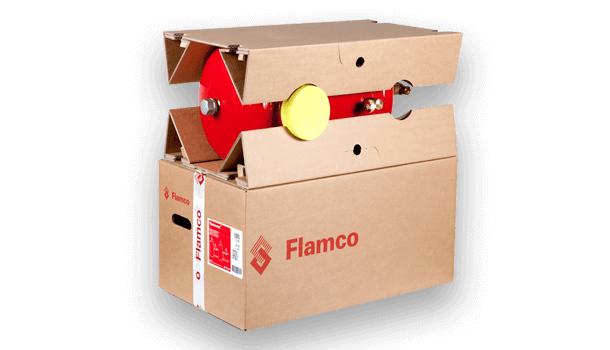Plastic Container Manufacturer Quality: Crafting Solutions for You
Wiki Article
Efficient Industrial Recycling Solutions for Lasting Packaging: A Comprehensive Overview
In today's progressively environmentally-conscious globe, the demand for sustainable product packaging options has never ever been greater. To satisfy this demand, services throughout markets are actively looking for effective commercial recycling solutions. Browsing the facility landscape of sustainable product packaging can be challenging without a detailed overview. That's where this thorough guide on reliable commercial recycling solutions for lasting packaging can be found in. By discovering crucial areas such as product packaging material option, making for recyclability, implementing reusing framework, collaborating with reusing partners, and tracking and gauging recycling success, this overview will furnish you with the knowledge and tools needed to make informed choices and drive positive modification within your company. Whether you're a packaging specialist, sustainability supervisor, or simply curious about the topic, this overview will supply beneficial understandings and strategies to help you browse the globe of lasting product packaging.Packaging Material Choice
The selection of product packaging products plays a critical duty in ensuring the sustainability of industrial reusing solutions. When it concerns lasting packaging, the option of materials is vital in reducing ecological influence and making the most of reusing effectiveness. Picking the right products can help in reducing waste generation, save resources, and advertise a round economy.Products like cardboard, paper, glass, and certain kinds of plastics can be reused multiple times without losing their high quality. On the other hand, products that are challenging to recycle, such as combined plastics or non-recyclable composites, can create difficulties for the reusing process and may finish up in burners or landfills.
Another factor to consider is the usage of biodegradable and sustainable products. Packaging made from renewable resources, such as plant-based plastics or biopolymers, can help in reducing reliance on fossil fuels and alleviate climate adjustment. In addition, naturally degradable products break down naturally in time, minimizing the accumulation of waste in landfills.
Additionally, the weight and quantity of packaging materials need to be reduced to decrease transport prices and power consumption. Light-weight materials not only need less resources throughout manufacturing yet likewise add to decrease carbon discharges throughout transport.
Designing for Recyclability
In order to make sure the recyclability of packaging materials, thoughtful layout is necessary. Creating for recyclability includes producing packaging that can be easily arranged, separated, and processed in recycling centers. One crucial facet of developing for recyclability is the option of products. Product packaging developers need to prioritize the use of materials that are commonly approved for reusing and have established reusing frameworks. Materials such as glass, aluminum, and particular sorts of plastic, like pet dog and HDPE, are commonly reused and need to be chosen over products that are pricey or challenging to reuse.One more critical consideration in developing for recyclability is the elimination of unneeded parts or materials. By decreasing the number of layers, coatings, and additional components, product packaging can be made less complex and easier to reuse. In addition, developers must aim to minimize making use of blended products, as they can make complex the reusing procedure.

Implementing Recycling Infrastructure
Effective application of recycling infrastructure is crucial for the success of commercial recycling options. Without correct facilities in position, the recycling procedure ends up being inefficient and ineffective, preventing the overall goal of sustainable packaging.To apply reusing infrastructure properly, several crucial elements need to be thought about. There ought to be an efficient collection system that promotes the splitting up and collection of recyclable materials. This can include assigned recycling containers in public rooms, in addition to collaborations with waste monitoring companies for curbside pick-up and sorting.
Once gathered, the recyclable materials need to be moved to reusing centers in a timely manner. This requires efficient logistics and transportation networks, making sure that the materials get to the suitable facilities immediately.
At the recycling centers, progressed sorting and handling modern technologies must remain in location to separate various kinds of products effectively. This includes using automated arranging devices, optical scanners, and manual sorting strategies.
Moreover, there ought to be a durable market demand for recycled products. This can be accomplished with cooperations with producers and industries that utilize recycled materials in their manufacturing processes. Creating a stable market for recycled materials incentivizes the recycling industry and advertises the round economic situation.
Collaborating With Recycling Allies

One trick element of teaming up with reusing partners is the facility of clear communication channels. It is essential to establish open lines of interaction to promote the exchange of info, updates, and responses. This allows both events to stay educated about the development of recycling initiatives and resolve any type of difficulties or issues that may arise.
In addition, collaboration can entail joint initiatives in creating and implementing reusing programs. Reusing partners can supply useful understandings and advice in creating efficient collection systems and determining one of the most suitable recycling modern technologies. By working together, organizations and reusing partners can maximize the reusing procedure and minimize waste.
Furthermore, collaboration can expand past the operational facets of reusing. It can likewise include advocacy and education and learning campaigns. By joining forces, organizations and recycling companions can elevate awareness regarding the value of recycling and promote the adoption of sustainable packaging techniques among customers and other stakeholders.
Tracking and Measuring Recycling Success
To make certain the efficiency of industrial recycling services and the achievement of lasting product packaging goals, it is critical for companies and their reusing companions to establish a thorough system for tracking and gauging reusing success (industrial metal packaging). Tracking and determining reusing success permits organizations to evaluate the effect of their reusing efforts, determine locations for enhancement, and established significant targets for future progressOne means to track reusing success is via making use of data collection and evaluation tools. By gathering information on the quantity of product packaging waste generated, the percent of waste that is recycled, and the kinds of materials being reused, services can get important understandings right into their reusing efficiency. This information can after that be evaluated to identify fads, patterns, and locations of inefficiency.
Another vital facet of tracking and gauging reusing success is developing standard and clear metrics. This permits businesses to compare their efficiency against sector criteria and track their progression with time. Metrics such as reusing rates, waste diversion prices, and greenhouse gas exhausts can give a quantitative step of a company's reusing success.

Verdict
Finally, executing efficient commercial recycling services for lasting product packaging needs careful consideration of packaging material choice, designing for recyclability, applying recycling framework, collaborating with recycling companions, and monitoring and determining recycling success. By integrating these methods, organizations can add to a more lasting and environmentally-friendly method to product packaging, reducing waste and advertising the circular economic situation.By exploring key areas such as product packaging product choice, making for recyclability, carrying out reusing framework, working together with recycling companions, and monitoring and determining recycling success, this overview will furnish you with the expertise and tools necessary to make educated choices and drive positive modification within your organization. Product packaging developers ought to focus on the use of materials that are extensively accepted for recycling and have developed recycling infrastructures.Partnership with recycling partners is vital for the effective execution of commercial reusing options and the accomplishment of sustainable packaging goals. By signing up with forces, organizations and recycling partners can increase awareness regarding the importance of reusing and advertise the fostering of sustainable product packaging methods amongst consumers and other stakeholders.
By gathering information on the quantity of product packaging waste generated, the percentage of waste that is recycled, and plastic container manufacturer the kinds of products being recycled, businesses can gain valuable insights right into their reusing efficiency.
Report this wiki page